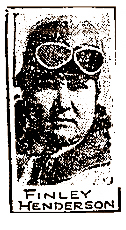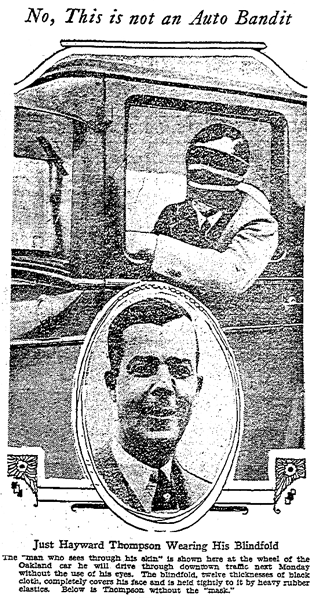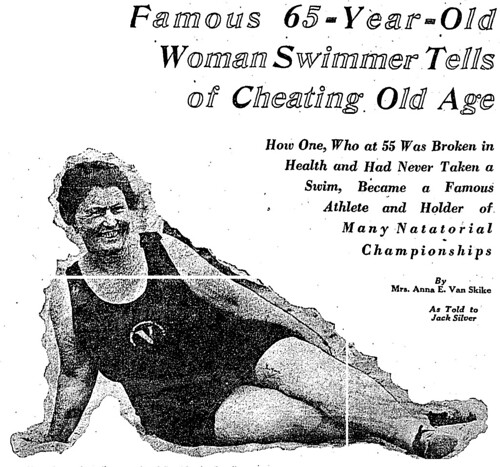February 9, 1927
Los Angeles
 Sure, while we’ve repeatedly reported to you about blindfolded drivings—today was announced something that actually guarantees splintering wood and crunching metal.
Sure, while we’ve repeatedly reported to you about blindfolded drivings—today was announced something that actually guarantees splintering wood and crunching metal.
Finley Henderson has a really good idea: dive an airplane from a height of 1,000 feet, clip the wings from the machine between two telegraph poles, and crash into a bungalow with the remains of his plane at sixty miles an hour.
Don’t worry: he wears the shoulder and shin guards of the football field, the breast pad of the baseball umpire and a catcher’s mask. Kids, try this at home. Above your home. Into your home.
Sponsored by Earl L. White and KELW! Come on out to Burbank’s Magnolia Park and watch the fun!
 For the record, when the stunt was performed on February 20, Finley emerged unscathed, smoking a cigarette. And then noted for the wowed crowd and boys of the press “The stunt is easy if you know how to do it.”
For the record, when the stunt was performed on February 20, Finley emerged unscathed, smoking a cigarette. And then noted for the wowed crowd and boys of the press “The stunt is easy if you know how to do it.”
Finley made the news again in June, when, at the Glendale Airport Air Rodeo, just as he was stepping into his plane (this time, to crash into a barn), in front of all those eager spectators, United States Deputy Marshal Charles F. “Spoil Sport” Walsh served Finley a summons. Hot on Walsh’s heels were pansy Capts. Walter F. Parkin and William B. Breingan, of the recently created Aeronautics Branch, United States Department of Commerce (oh, Mary), there to enforce their writ of injunction restraining Finley from performing the stunt.
Apparently, these hi-falutin’ aeronautics fellows have just made stunting within five miles of a regularly established and operated air line against the law…apparently also is flying a plane that is wholly unsafe, and is likely to collapse upon the audience when in flight.
But wasn’t that part of the thrill? No wonder we went into a depression.


 Hayward Thompson toured Los Angeles today, and pronounced on KFWB this evening (through the courtesy of the Times and
Hayward Thompson toured Los Angeles today, and pronounced on KFWB this evening (through the courtesy of the Times and 

